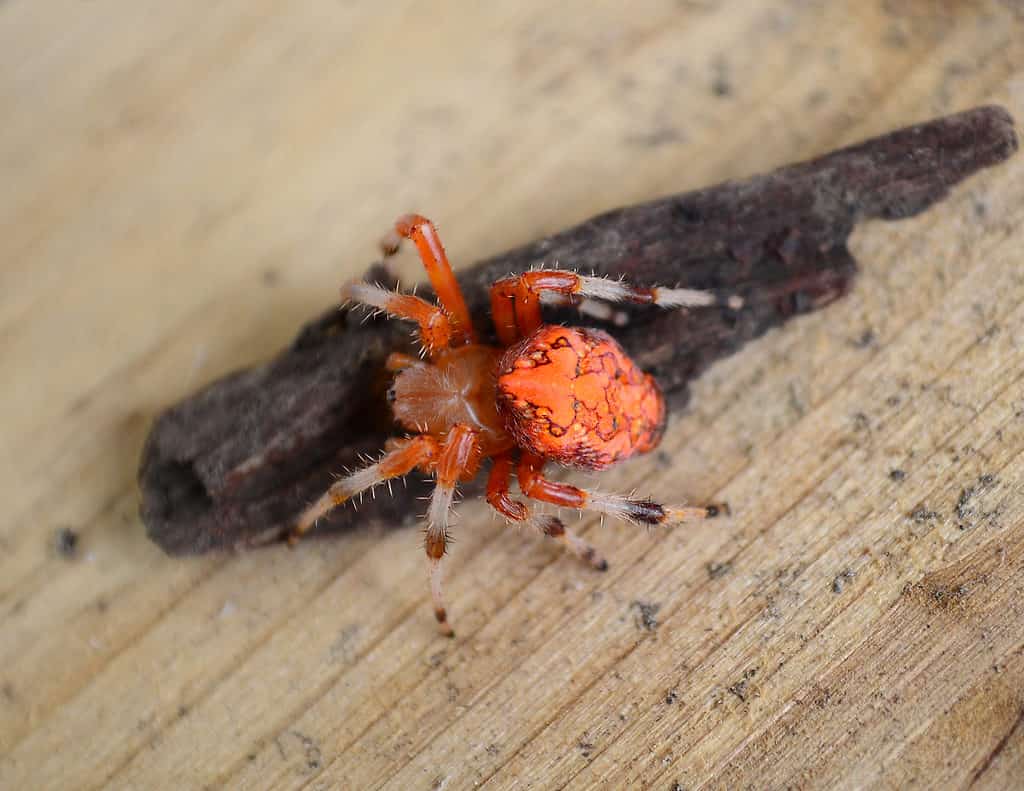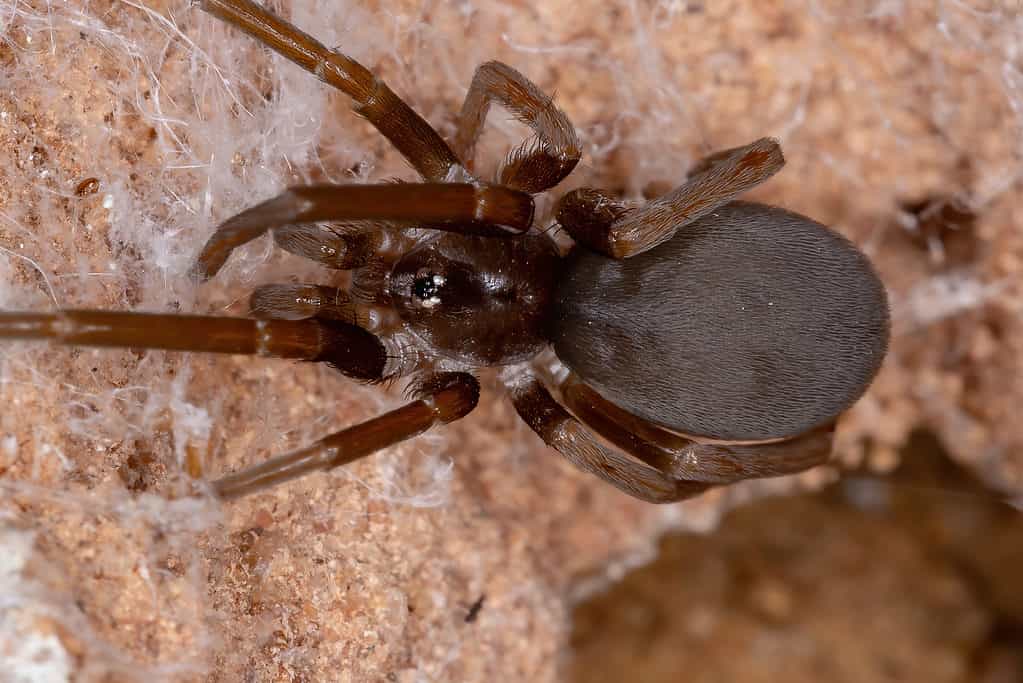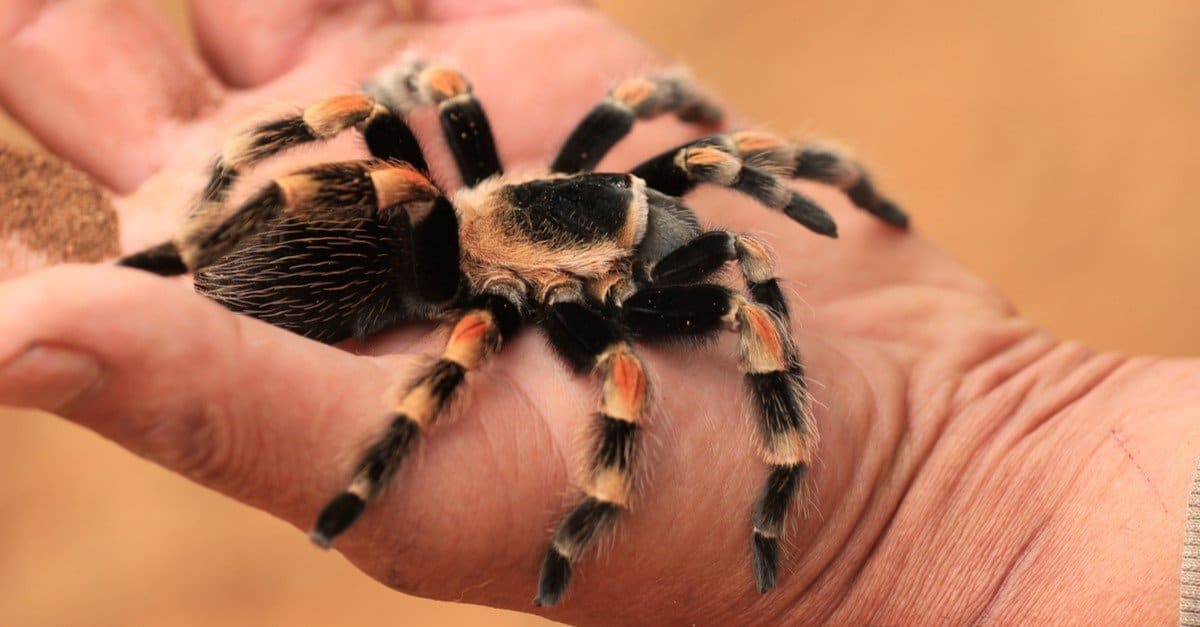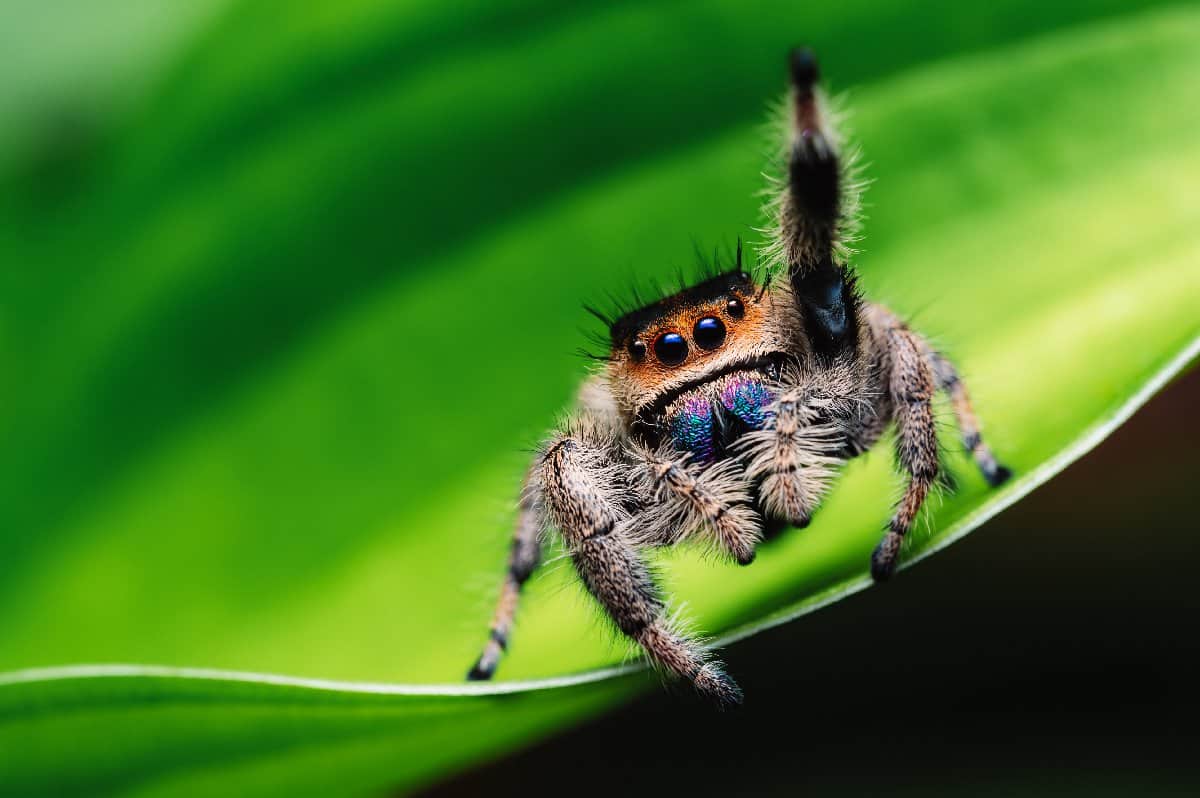As far as pets go, spiders aren’t always at the top of the “favorites” list. They are gaining in popularity thanks to a handful of social media accounts posting adorable videos of the arachnids. Now that most people have seen those videos, the desire to join spider groups and adopt from breeders has grown tremendously. There is much debate over whether or not certain types of spiders should be kept as pets, but like anything else, love is in the eye of the beholder. In this article, prepare to learn about the best types of spiders to keep as pets.
6. Wolf Spiders

The wolf spider is a ground-hunting spider that makes small nests to sleep in.
©iStock.com/CathyKeifer
Wolf spiders are another commonly kept type of pet spider. They are easy to feed because they hunt on the ground by foot. The wolf spiders prefer to have many options for hiding places and would be happiest in a bioactive enclosure. One downside is they do not like to be held and shouldn’t be since they are fast. There are many species of wolf spiders to look into before deciding if they are the right pet for you. The largest species can grow to be two inches long. Be sure to look into their care and find a proper enclosure before getting a wolf spider.
5. Orbweavers

Orbweavers come in many different shapes, sizes, and colors.
©iStock.com/earlydawnphotography
The unique orb weaver is everywhere and is the most common type of spider. They can be tiny, brightly colored and spiky, big-bodied and brown with intricate designs, or large like the yellow garden spider (Argiope aurantia). They all make large orb-shaped, sticky webs to catch insects and spend almost their entire lives sitting on these webs. It’s only because of that that they make good pets. However, they require large, well-ventilated enclosures to make their large webs. It would be considerably easier to house a small orb weaver, like the spiny-backed orb weaver or the pumpkin patch orb weaver. They are less than an inch big and live for 1 – 3 years.
4. Southern House Spider (Kukulcania hibernalis)

Southern house spider males are much smaller-bodied than the females.
©Vinicius R. Souza/Shutterstock.com
These amazing spiders are sometimes called black hole spiders or giant crevice weavers. They are found in small holes or crevices on the side of buildings. They are sometimes found indoors, hiding in windows or crevices high up on walls or ceilings. Females are rich, chocolaty brown, and grow to be 0.50 – 0.70 inches. They are very docile and live up to eight years. Southern house spiders are extremely gentle if you get the rare opportunity to hold one. These are spiders that are fun to keep and very easy to care for. Housing can be complicated because they prefer to live in small holes and build sticky webbing as a doormat outside. When an insect touches the webbing, the spider shoots out and grabs them before retreating back to their den.
3. Tarantulas

Tarantulas have been the only popular spider pet for decades.
©Vladimira Pufflerova/Shutterstock.com
The tarantula is an amazing arachnid, but it is very important to do your research before committing to one species. Old World tarantulas are more aggressive and difficult for beginners than New World tarantulas. There are many varieties and colors; some are docile, and some are more likely to bite. Tarantulas that are great for beginners are the Mexican red knee (Brachypelma smithi), pink zebra beauty (Eupalaestrus campestratus), Costa Rican curly hair (Brachypelma albopilosum), and Chilian flame (Euathlus sp red). It is highly unlikely that your tarantula will beg to be held. However, these types are easier to handle than many. It all depends on the individual spider. These spiders, on average, live for 20 – 30 years. Make sure to find the perfect enclosure for your spider before getting them.
2. Velvet Spiders

Velvet spiders look like very small spider plushes because of their endearing and timid expression.
©Anna Seropiani/Shutterstock.com
The velvet spider is absolutely adorable and makes great pets. They are extremely easy to care for, with different species ranging in colors, including the ladybird velvet spider, whose male is red and black. They are only one inch long at most and do not require water since they are from a very dry climate. Their source of hydration comes from the insects they eat. Velvet spiders do not spend their time being curious. Instead, they prefer to remain in their small burrows made of moss. If you do handle them, they are very docile and handleable. Sometimes, they can even be housed with other velvet spiders. They are considerably more expensive than jumping spiders but worth every penny.
1. Jumping Spiders

The love for jumping spiders has grown tremendously since
Lucas, the Spider.
©iStock.com/Jan Rozehnal
Jumping spiders came in first place for the best spiders to keep as pets. They are outgoingly curious by nature, typically enjoy the company of humans, and are friendly. Jumping spiders also rank as one of the easiest spiders to care for. Different species of these spiders can vary in color and size, with some being the size of an ant. If you are just starting out, it’s best to have one of the larger species, like the bold or regal jumping spiders. They also tend to be the friendliest species.
It’s hard to believe such a small arachnid can have such a big personality. They are also fun to watch, hunt, and build their hammocks, which are what they sleep in at night. They love bright lights and warmth. Many also enjoy hopping onto a hand offered and enjoy coming out to explore on you or a play gym. Their sweet lives are sadly too short, with the spiders typically living for 1 – 3 years. They are wonderful companions while they’re around. Be sure to check out our guide on caring for jumping spiders.
The photo featured at the top of this post is © Marek Velechovsky/Shutterstock.com
Thank you for reading! Have some feedback for us? Contact the AZ Animals editorial team.






